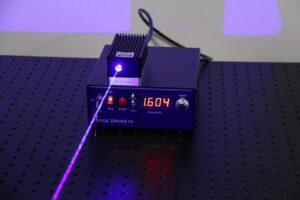

According to the researchers, the developed laser system based on a new MIR laser beam light source enables them to determine greenhouse, other gases, and, moreover, molecules in a person’s breath. The thing is that the used fiber laser produces light in a specific wavelength range.
The operating principle of the fiber laser system is based on the laser beam that “is directed through a waveguide measuring 1 μm (0.001 mm) across and one-half mm in length. The waveguide can alter the frequency of the light as it passes through.” Herewith, several key aspects of the laser system’s design were improved. Among them are the waveguide geometry and material and the wavelength of the original laser beam source.
Thus, the researchers obtain a fiber laser system that is regarded as simple, yet efficient and reliable. Also, it becomes possible to adjust the wavelength of the laser beam light by tuning the geometry of the waveguide. The laser system is considered to be a turnkey, highly efficient, compact MIR laser beam source. It provides power levels sufficient for spectroscopy applications.
The system has been already tested on the detection of acetylene, a colorless and highly flammable gas, by absorption spectroscopy. The thing is that the fiber laser emits laser beam light in the MIR spectrum, saving 30% of the original signal strength. For instance, the waveguides pumped with a 2-μm fs fiber laser succeded a spectroscopic spectral region in the 3- to the 4-μm range, with up to 35% power conversion and mW-level output powers.
The researchers confirm that the developed fiber laser system sets a new benchmark for efficiency. Moreover, it is the first fully-integrated spectroscopic laser beam source resulting in no need for the laborious process of accurately aligning all the components in a standard laser system.
Finally, it was challenging to transport previous IR fiber laser systems for application since they include complex, damage-prone hardware. Modern laser systems can promote the development of additional miniaturized MIR technologies. It has a wavelength range that scientists rarely get to work with. Additionally, now the researchers have the opportunity to see on-chip detectors that is possible to be easily carried out into the field.
Optromix is a fast-growing fiber laser manufacturer and a vendor of optical fiber sensors and optical monitoring systems. The company offers fast turnkey solutions and creates sophisticated fiber laser systems for special purposes. Optromix uses only its technologies and develops a broad variety of fiber lasers. If you have any questions or would like to buy a laser system, please contact us at info@optromix.com







